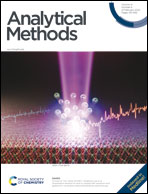Assessing the effectiveness of microplastic extraction methods on fishmeal with different properties
Abstract
Microplastic presence in fishmeal is an emerging research area because of its potential to enter food chains, and the importance of fishmeal within global food security. However, fishmeal is a complex medium dependant on fish composition. This study measured properties (organics, carbonates, protein and density) of five fishmeal types (trimmings, sardine and anchovy, krill, tuna and salmon), sourced from locations worldwide (Norway, South America, Antarctica, Spain and Scotland). Microplastic recovery rates were compared for existing methodologies using sodium chloride overflows and potassium hydroxide digestions and then compared to newly developed methods. These methods included dispersants and calcium chloride density separations which were developed and designed to be environmentally conscious and affordable, which we argue should become an international standard approach for researchers. A calcium chloride overflow with dispersant and potassium hydroxide digestion provided the highest recovery rate in sardine and anchovy fishmeal (66.3%). Positive correlations with recovery rate were found with protein content, and negative correlations with organic content. Low recovery rates found here suggest microplastics in fishmeal reported in the literature are underestimated. With complex media such as fishmeal, attention must be paid to variation between types and composition when choosing methods and interpreting results.



 Please wait while we load your content...
Please wait while we load your content...